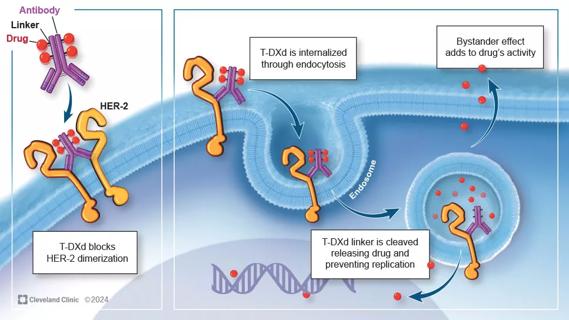Technique is a promising alternative to surgery or radiation therapy

Advertisement
Cleveland Clinic is a non-profit academic medical center. Advertising on our site helps support our mission. We do not endorse non-Cleveland Clinic products or services. Policy
Traditionally, localized tumors of the genitourinary tract have been treated through either surgical extirpation or radiation therapy. While these often are effective, there are some potential side effects to such modalities. Techniques that ablate tumors with curative intent while limiting the morbidity of the treatment are under development.
One ablative approach in use is the application of heat to a tumor. When tissues are heated to > 55 degrees Celsius, coagulation necrosis occurs and the tumor and a margin of normal adjacent tissue are destroyed. At temperatures > 60 degrees Celsius, coagulation necrosis is immediate.
There are several ways to deliver heat to a tissue. Heat can be delivered by direct contact with a heated probe. One example of this approach is the use of laser energy, either via a beam (e.g., GreenLight™ laser) or direct contact (e.g., holmium laser). These heat sources are used to photovaporize (GreenLight laser) or incise (holmium laser) tissue in a prostate enlarged due to benign prostatic hyperplasia (BPH).
Another approach is the use of radiofrequency energy to create a current that releases resistive energy as it passes through tissues. Examples of this approach are transurethral needle ablation (TUNA) of the prostate for BPH and radiofrequency ablation (RFA) of kidney tumors using a percutaneously placed probe guided by computed tomography.
High-intensity focused ultrasound (HIFU) is a technique in which acoustic energy is produced by running current through a piezoelectric crystal or transducer. This energy is the same as that used for diagnostic imaging with ultrasound. Once a tumor is identified for treatment, acoustic energy waves are focused on the tissue to be ablated. Heat energy is generated via the kinetic energy of the waves passing through the tissues and the cavitation created by the rapid expansion and collapse of microbubbles in the tissues being treated.
Advertisement
An important advantage of this technique is that the delivery of the energy to the targeted tissues is “trackless,” since the tissues through which the waves pass are unaffected by the waves as they are delivered to the focal point. Trackless delivery allows for preservation of some of the surrounding tissues. Patients also can be retreated. Inability to retreat is a major disadvantage of radiation therapy. Currently, HIFU is considered investigational in the United States, although it is available in many other places including Canada, Europe and Asia.
With improved heat delivery techniques and the ability to couple treatments to increasingly accurate forms of imaging, the use of heat to ablate genitourinary tumors continues to expand. Novel methods of energy delivery may include minimally invasive or even noninvasive techniques. Currently at Cleveland Clinic we are investigating such applications in clinical trials.
In the future, treatment of localized genitourinary tumors may no longer require undergoing traditional surgery or radiation therapy, but may instead involve the precision delivery of heat energy to the targeted tissue.
Dr. Berglund is a staff member of Cleveland Clinic Glickman Urological & Kidney Institute’s Department of Urology.
Advertisement
Advertisement

First-of-its-kind research investigates the viability of standard screening to reduce the burden of late-stage cancer diagnoses

Global R&D efforts expanding first-line and relapse therapy options for patients

Study demonstrates ability to reduce patients’ reliance on phlebotomies to stabilize hematocrit levels

A case study on the value of access to novel therapies through clinical trials

Findings highlight an association between obesity and an increased incidence of moderate-severe disease

Cleveland Clinic Cancer Institute takes multi-faceted approach to increasing clinical trial access 23456

Key learnings from DESTINY trials

Overall survival in patients treated since 2008 is nearly 20% higher than in earlier patients